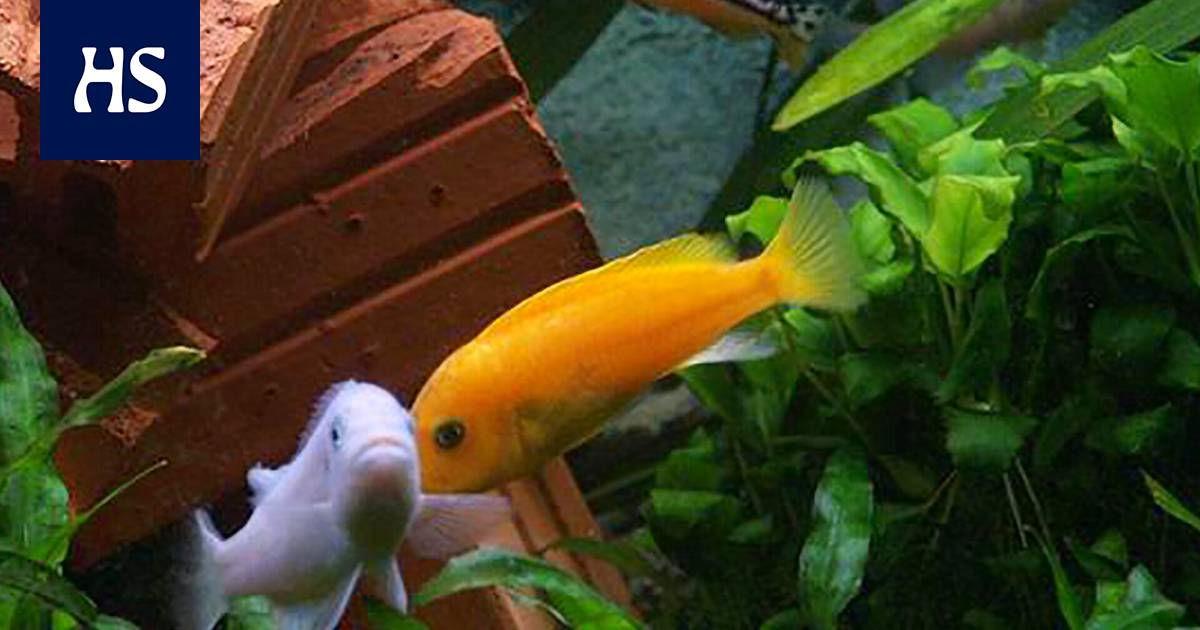Without the help of numbers, a human’s math head isn’t exactly fishier.
Are they learning fish solve solving problems?
This unlikely question was recently resolved by a researcher at the University of Bonn in Germany Vera Schluessel with groups. Even the answer may surprise the layman.
The experimental fish were African zebra finch and peacocks in the Amazon.
The fish were taught a complex task. They got to see cards with a different number of patterns. If the patterns were blue, the fish had to be added to their number one, and if they were yellow, one had to be subtracted from the number.
The fish responded by selecting the one with the correct number from the two available gates. Thus, when the fish was shown three blue patterns, it had to swim through a gate marked with four patterns.
If, on the other hand, the patterns were yellow, the correct answer was two. For the correct answer, the Malawian perch were rewarded with food pellets, rays with earthworms and shrimp.
The patterns on the cards were different shapes and sizes. In this way, the fish could not deduce the correct answer from the overall look of the card or the surface area of the patterns.
Majority of the Malawian perch dominated the counting. For most of Rausku, the doctrine did not arrive at all and the rest learned slowly. But when they finally internalized the matter, they made far fewer mistakes than perch.
Reductions were more difficult for both fish species than additions.
Depending on the species and the quality of the task, the fish hit the right one in 69-94% of cases, ie clearly more often than by chance.
The results were published
Scientific Reports
in March.
Rauskuk also understands something about the numbers, the study showed – at least the peacock.
Animal and human arithmetic skills have been extensively studied in recent years as the origins and prevalence of the math head in the animal kingdom have been mapped.
The results are likely to undermine the view of man as a top expert in all intellectual skills.
Indeed, people are not noticeably better off counting fish if we are denied the opportunity to use read words.
Studies have shown that vertebrate animals have two parallel systems for counting.
Small numbers can be calculated accurately and quickly with a single glance. This capability capability is present in most of the animals studied and also in humans in only 3 to 5 sites.
In larger numbers or when there are a lot of distractions, a rough estimate comes into play instead of a precise calculation.
Then getting a response slows down. The number of errors begins to be affected by how close the numbers are.
Both systems are also used by adults in everyday situations, despite the fact that we use a third system in addition to them: reading words and mathematics learned in school.
For example, the number of yogurt jars in the refrigerator is easy to see without counting if there are two or three of them.
At peak times, the length of the market’s checkout queues is faster to estimate roughly than to calculate each customer individually.
Then there will be mistakes. It is often only when standing in line that you notice that there was a slightly shorter queue at the checkout next door.
It is very difficult for an adult to distinguish between seven and eight objects in an experimental situation where the objects are displayed for such a short time that it is not possible to list the reading words in mind.
Accounting skills does not track brain size.
Cerebellar fish can be just as good at counting as birds and mammals. There are still large differences in abilities between animal species and individuals.
Individual differences are likely explained by variation in personality and intelligence. Quality of life also matters.
Animals living in cramped and non-stimulating conditions perform much worse in a wide range of intelligent and learning tasks than their fellow species, which are allowed to live in spacious and varied conditions.
The zebrafish perch, which studied the main course of fish research, were housed alone in 54-liter aquariums decorated with only a clay pot and one plant.
The conditions were very far from the natural habitat of the species, which is the maze of more than 500 kilometers of Malawi, a rocky bedrock teeming with countless fish.
Thus, it may be that the perch in the study did not represent approximately the top of their species.
Dogs are mathematically far less talented than aquarium fish or wolves.
Species lifestyles are crucial: animals are good where they need to be. There is a gaping gap between the dog and wolf counting skills, test results show.
Pet dogs are mathematically far less talented than aquarium fish.
In experiments where they are taught to choose between different amounts of treats, they use a rough estimate for even small numbers instead of an exact calculation.
Thus, at least for dogs, there seems to be a lack of ability to perceive even small numbers at first glance.
Yes, an adult dog distinguishes one piece of sausage from three. However, most do not learn to distinguish even two from three, let alone three out of four.
For eight-week-old puppies, separating even one and four treats is often overwhelming.
Susilla instead, there is no difficulty in distinguishing between three and four pieces of sausage when tested under the same conditions as dogs. In the study, the experimental animals were American pet dogs and wolves that socialized in humans.
Scientists speculate that the difference stems from the lifestyles of the species. For wolves preying on a herd, it is important to keep track of both the numbers of their own companions and the numbers of prey.
Dogs, on the other hand, have been dependent on humans for at least 15,000 years. Domestication has reduced their brains and made them lifelong puppies compared to wolves. It has been studied to affect many dogs ’intellectual abilities.
Human the ability to derive and other intricacies of mathematics is apparently not due to the fact that we are congenitally mathematically particularly gifted.
The explanation is the symbols: spoken and written numbers and other signs that help with memory and thinking.
The use of numbers is not entirely out of reach of other animal species. For example, an animal cognition researcher Irene Pepperbergin trained gray parrot Alex answered questions about the number in English. It also learned to use written numbers.
So far, no animal species has been shown to use numbers in the wild. However, research into animal-to-animal communication is still in its infancy.
The fish barely numbered the angling worms they ate. Maybe something like readings can still be found in nature.
#Animal #intelligence #fish #add #subtract #numeracy #persons #special #ability








